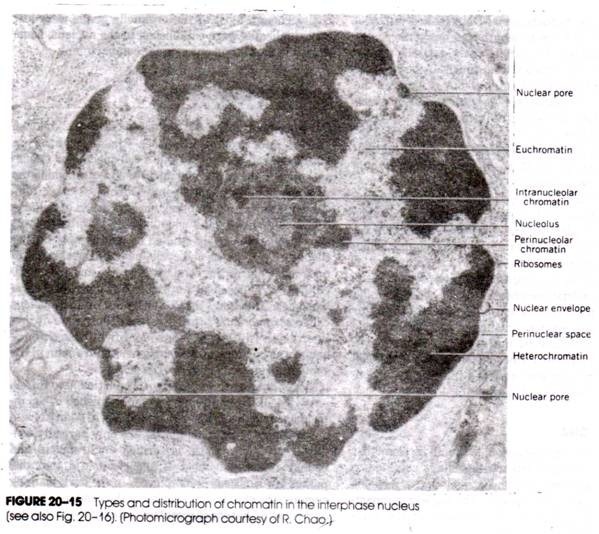In this article we will discuss about Pteridospermales. After reading this article you will learn about: 1. Meaning of Pteridospermales 2. General Characters of Pteridospermales 3. Classification 4. Affinities.
Contents
Meaning of Pteridospermales:
The Pteridospermales are popularly known as “seed-ferns”. They possessed fern-like foliage, bore seeds, and are, therefore, called pteridosperms. They first appeared on the earth in Upper Devonian times of the Palaeozoic era (Fig. 1.1). They were at their climax in Carboniferous period and became extinct in Jurassic period of Mesozoic era.
The details of only a few fossil plants of this order are fully known, and, therefore, the present account is based on the available details of separate parts placed in the form of form-genera.
Members of Pteridospermales of division Spermatophyta (seed plants) resemble with Filicales (ferns) of pteridophyta in shape of their large, usually multi-pinnate leaves and in the venation of their leaflets Seeds have been found attached to some of these fern-like fronds.
Due to this, the name Pteridospermae has been suggested which indicates a group of the plants showing the characters of both ferns and seed plants. Chamberlain (1935) objected for the use of this name and preferred to name it as Cycadofilicales because of their several resemblances with both Cycadales of gymnosperms and Filicales (ferns) of pteridophytes.
Significant contributions on the study of this group have been made by Stur (1883), Williamson (1887), Potonie (1899), Oliver and Scott (1903) and Kidston (1904) In India, Cycadofilicales occurred in the lower, middle and upper Gondwana systems formed in the Palaeozoic and Mesozoic eras.
Instead of Pteridospermales or Cycadofilicales, Sandra Holmes (1986) preferred to name the order as Lyginopteridales and placed this order under class Lyginopteridatae of sub-division Cycadophytina of gymnosperms.
General Characters of Pteridospermales:
1. Extinct Palaeozoic and Mesozoic plants found from Devonian to Jurassic periods.
2. Plants possessed slender stems with large frond-like leaves as in Alethopteris, Sphenopteris, etc.
3. Primary xylem was mesarch, represented by solid or medullated protostele. Rarely, the primary xylem was exarch. Polystelic condition was also observed in some members.
4. The secondary wood was manoxylic (loose and soft) and limited in amount.
5. The radial walls of tracheids had multiseriate pits.
6. The cortex was well-developed and had longitudinally aligned fibre strand.
7. Leaves were usually fern-like, relatively large, pinnately compound, and often pinnate several times.
8. The leaves were covered by a resistant cuticle.
9. Ovules borne separately along margins of, or on surface of pinnately compound megasporophylls.
10. Ovule-bearing frond or megasporophyll was not part of a cone.
11. Megasporophylls were not arranged in strobili.
12. Megasporophylls were like foliage leaves, or specialized structures, sometimes peltate.
13. Microsporophyll’s pinnately compound and not in strobili.
14. The microsporangia had no annulus and were sometimes grouped into synangia.
15. A well-developed vascular supply was present in the seed.
16. The seeds were also provided with a definite pollen chamber, e.g. Lagenostoma lomaxi.
17. The seeds of Pteridospermales resemble with those of the present day Cycads.
Classification of Pteridospermales :
Arnold (1948) divided Cycadofilicales into following three families:
1. Lyginopteridaceae, e.g., Lyginopteris, Heterangium.
2. Medullosaceae, e.g., Medullosa
3. Calamopityaceae, e.g., Calamopitys.
But Sporne (1974) divided Pteridospermales (Cycadofilicales) into following seven families:
1. Lyginopteridaceae
2. Medullosaceae
3. Calamopityaceae
4. Glossopteridaceae
5. Peltaspermaceae
6. Corystospermaceae
7. Caytoniaceae.
Sporne (1974) mentioned that the first three families (Lyginopteridaceae, Medullosaceae and Calamopityaceae) were confined to Palaeozoic era while the last four (Glossopteridaceae, Peltaspermaceae, Corystospermaceae and Caytoniaceae) were restricted to the Mesozoic or extended from the late Palaeozoic into the Mesozoic.
Some of the Pteridospermales are shown in Fig 4.1 and Fig. 4.2.
Affinities of Pteridospermales:
Pteridospermales (Cycadofilicales) may be assigned an intermediate position between ferns and Cycadophytes due to their several resemblances with both the groups. But due to the presence of exposed seeds they belong to gymnosperms with certainty.
Some of their possible affinities with ferns and Cycadophytes are mentioned below:
Similarities with Ferns:
1. Large and pinnately compound leaves.
2. Young leaves are circinately coiled.
3. Mesarch or rarely exarch condition. Leaf traces are also mesarch.
4. Absence of vessels in the xylem and companion cells in the phloem.
5. Polystelic condition of Medullosa resembles with ferns.
6. The sporangia were borne on the foliage leaves.
7. Except the presence of secondary wood, the vascular anatomy of stem is similar with that of ferns.
8. Presence of thick wall around the megaspores.
Similarities with Cycadophytes:
There are several common characteristics found in both Cycadales and Pteridospermales.
Of these, some are under mentioned:
1. The wood is manoxylic in both Cycadales and Pteridospermales.
2. Mucilage canals are present in the cortex and pith of the stem of both cycads and “seed ferns”.
3. Extensive cortex is present in most of the Cycadales and in some Pteridospermales (e.g. Medullosa).
4. Centripetal xylem is present in some Cycadales and also in the vegetative organs of some “seed ferns” or Pteridospermales.
5. Male gametes or spermatozoids are multi-ciliate and motile in both the groups.
6. In both Pteridospermales and some Cycadales (e.g. Cycas), the megasporophylls remain spirally and loosely arranged, and they do not form a compact cone.
7. In Calymmatotheca the ovules remain attached on the proximal parts of the leaves and their distal or tip regions remain sterile. In this regard, they resemble with the megasporophylls of Cycas, in which upper part is dissected, leafy and sterile while the lower part bears ovules.
8. The seeds of Lagenostoma lomaxi of Pteridospermales remain surrounded by an outer hard stony layer and an inner fleshy layer. They resemble the seeds of cycads to some extent.
9. The vascular supply of the ovules of cycads and some Pteridospermales also show some similarity with each other.
10. Both Cycadales and Pteridospermales possess pinnately compound leaves.
11. Pollen chamber is present in the ovules of both these groups.


